 |
 |
 |
 |
 |
 |
 |
 |
Click on the picture of your favorite celebrity to view more information. | |
 |
|||||||||
|
A MATCHLESS LIBRARY TELEVISION ARCHIVE |
 |
|
 |
|
 |
|
 |
|
 |
|
 |
|
 |
|
 |
|
 |
|
 |
|
 |
|
 |
|
 |
|
 |
|
 |
|
 |
|
 |
|
 |
|
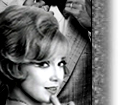 |
|
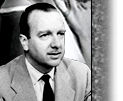 |
|
 |
|
 |
|
 |
|
 |
|
 |
|
 |
|
 |
|
 |
|
 |
|
 |
|
 |
|
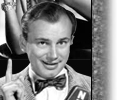 |
|
 |
|
 |
|
 |
|
 |
|
 |
|
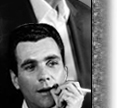 |
|
 |
|
 |
|
 |
|
 |
|
 |
|
 |
|
 |
|
 |
|
 |
|
 |
|
 |
|
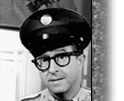 |
|
 |
|
 |
|
 |
|
 |
|
 |
|
 |
|
 |
|
 |
|
 |
|
 |
|
 |
|
 |
|
 |
|
 |
|
 |
|
 |
|
 |
|
 |
|
 |
|
 |
|
 |
|
 |
|
 |
|
 |
|
 |
|
 |
|
 |
|
 |
|
 |
|
 |
|
 |
|
 |
|
 |
|
 |
|
 |
|
 |
|
 |
|
 |
|
 |
|
 |
|
 |
|
 |
|
 |
|
 |
|
 |
|
 |
|
 |
|
 |
|
 |
|
 |
|
 |
|
 |
|
 |
|
 |
|
 |
|
 |
|
 |
|
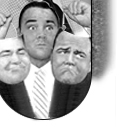 |
|
| Tributes | Talk | Events | News | Variety |
| Documentary | Music | Comedy | Juvenile | Awards |
| Biography | Sports | Productions | Others | Quiz |
| Specials |
|
352 Results found in Category Specials Pages: 1 2 3 [4] 5 6 7 8 |
|
#15493:
NBC SPECIAL REPORT: "BEYOND THE SKY."
1968-01-05, NBC, 14 min. Frank McGee A space documentary. NBC Newsman Frank McGee reports on the search for life in outer space. This program is joined in progress. |
|
#15523:
NEWS SPECIAL: PRESIDENT JOHNSON SPEAKS ON THE "PUEBLO" CRISIS.
1968-01-26, , min. Lyndon Johnson President Johnson makes a live statement regarding the "Pueblo" crisis. |
|
#15537:
NYC MOVIE PREMIERE OF "DR. FAUSTUS."
1968-02-07, WPIX, 43 min. Elizabeth Taylor , Dina Merrill , Allen Ludden , Arlene Dahl , Richard Burton , Ethel Kennedy , Les Jaffe , Jules Dassen , Merlina Mercouri , Sugar Ray Robinson Allen Ludden is the host for the New York City movie premiere of "Dr. Faustus." Celebrities on hand include Merlina Mercouri, Jules Dassen, Arlene Dahl, Les Jaffe, (President of Columbia Pictures), Elizabeth Taylor and Richard Burton do a filmed interview. There is a film of the London premiere of the movie with Burton arriving, Senator Robert Kennedy arrives with Ethel Kennedy. An after the movie interview with Dina Merrill and Sugar Ray Robinson. Also, an after- movie celebration at the Plaza Hotel in New York City. |
|
#15595:
NEWS, THE
1968-03-10, CBS, min. Dean Rusk , Mike Mansfield More questioning by Senator Mike Mansfield to Dean Rusk during the Vietnam Senate hearings. |
|
#15596:
NEW HAMPSHIRE PRIMARIES, THE
1968-03-12, , min. Lyndon Johnson , Richard Nixon , Ronald Reagan , Eugene McCarthy Senator Eugene McCarthy makes a good showing, Nixon wins hands-down, LBJ quips about results, comments by Nixon, Reagan, Johnson, and McCarthy. |
|
#15608:
NEWS, "HOTLINE REPORT." NBC RADIO NEWS
1968-03-12, NBC, 19 min. Russ Ward Coverage of the New Hampshire primary from NBC Radio News. Russ Ward reports. |
|
#15609:
NBC SPECIAL: THE NEW HAMPSHIRE PRIMARY
1968-03-12, NBC, 122 min. Richard Nixon , David Brinkley , Frank McGee , Chet Huntley , Eugene McCarthy Special on the new Hampshire primary. Chet Huntley, David Brinkley, and Frank Mcgee report. |
|
#9004:
NEW HAMPSHIRE PRIMARIES
1968-03-12, NBC, 00 min. Frank McGee , Eugene McCarthy , Lyndon B. Johnson Live coverage of the New Hampshire Democratic primaries the first in a series of nationwide party primary elections. Lyndon Johnson, who later announced he would not seek re-election, narrowly defeated Senator Eugene McCarthy to win the New Hampshire Democratic primary. Frank McGee is the host. |
|
#15633:
NBC NEWS SPECIAL REPORT
1968-03-16, NBC, 29 min. Robert F. Kennedy , Eugene McCarthy More commentary on the Democratic Party race, Senator Eugene McCarthy holds a press conference, RFK News Conference played again. |
|
#9002:
NBC NEWS SPECIAL: GOVERNOR NELSON ROCKEFELLER SPEECH, THE
1968-03-21, NBC, 00 min. Nelson Rockefeller New York State Governor Nelson Rockefeller announces he's dropping out of the 1968 Presidential race. |
|
#19021:
NCAA BASKETBALL: UCLA VS. HOUSTON
1968-03-22, WTVW, min. Bill Fleming , Kareem Abdul Jabbar , Frank Sims The UCLA Bruins meet the Houston Cougars in the 1968 NCAA basketball tournament. The Bruins behind Kareem Abdul Jabbar's 38 points crush the Cougars 101-69. Lucius Allen had 35 points and Mike Warren 33. Bill Fleming and Frank Sims call the action from Memorial Sports Arena, in Los Angeles, California, before a crowd of 15,442. Includes commercials. |
|
#15726:
NBC SPECIAL: "THE FIRST STEPS, NEW MOVES IN VIETNAM."
1968-04-03, NBC, 30 min. Edwin Newman An NBC News report with Edwin Newman. |
|
#8940:
NBC NEWS FINAL
1968-04-04, NBC, 30 min. Martin Luther King, Jr. Continuing live coverage of the assassination of Dr. Martin Luther King, Jr. |
|
#8942:
NBC NEWS SPECIAL: ASSASSINATION OF DR. MARTIN LUTHER, KING, JR, THE
1968-04-04, NBC, 30 min. Chet Huntley , Lyndon Johnson , Jesse Jackson , Martin Luther King, Jr. , Baxton Bryant , Coby Smith Live coverage of the assassination of Dr. Martin Luther King, Jr, hosted by Chet Huntley.
|
|
#7860:
NBC NEWS WITH CHET HUNTLEY
1968-04-05, WGY, min. Chet Huntley , Martin Luther King Continuing radio coverage of the Assassination of Dr. Martin Luther King. |
|
#15796:
NBC NEWS SPECIAL: HUBERT HUMPHREY TO RUN FOR PRESIDENT
1968-04-27, NBC, 35 min. Eric Sevareid , Hubert Humphrey , George Herman 1200 guests attend a dinner for Vice President Hubert Humphrey who announces his candidacy for president of the United States. Humphrey speaks to the guests. Also, CBS news coverage with George Herman and an analysis of Humphrey's speech by Eric Sevareid. |
|
#15805:
NBC DOCUMENTARY: "WE WON'T GO."
1968-05-03, NBC, 58 min. George Page As of this date, 700 draft resistors are in US prisons. Another 4,000 to 6,000 avoid the draft by fleeing to Canada. George Page reports for this NBC Documentary special. |
|
#15742:
NEGRO RALLY AT CENTRAL PARK
1968-05-04, WBAI, 29 min. Ossie Davis , Dr. Martin Luther King , Dr. Benjamin Spock A negro rally at central at Central Park is covered by WBAI radio. Speakers at the rally on behalf of the late Dr. Martin Luther KIng include, Ossie Davis, Dr. Benjamin Spock, others. Non violence and violent reactions and projections by protester's are heard. They express their points of view. |
|
#15812:
NBC NEWS: INDIANA ELECTION RETURNS
1968-05-07, NBC, 9 min. David Brinkley , Frank McGee , Robert Kennedy , Herb Kaplow , Eugene McCarthy , Liz Trotter NBC-TV coverage of the Indiana primary returns. Herb Kaplow reports on Richard Nixon's Nebraska campaign Robert Kennedy has 45% of the Indiana vote, NBC News declares him the winner Senator Eugene McCarthy is interviewed by Liz Trotter. Anchors: Frank McGee and David Brinkley, |
|
#15820:
NEWS: NEBRASKA PRIMARY RETURNS, THE
1968-05-14, , min. Richard Nixon The Nebraska primary returns. |
|
#19651:
NBC NEWS SPECIAL REPORT: "WE WON'T GO"
1968-08-04, NBC, min. Lyndon Johnson A look at Vietnam draft resistors and President Johnson's reaction. |
|
#15883:
NEWS THE: APOLLO 7 SPACE FLIGHT
1968-10-11, , min. Announcer The mission of the Apollo 7 space flight. |
|
#8949:
NBC NEWS SPECIAL REPORT
1968-10-11, NBC, 00 min. Announcer Special live coverage of the Apollo 7 spaceflight. |
|
#15893:
NBC NEWS SPECIAL
1968-10-12, NBC, 1 min. Frank McGee An NBC News update on the Apollo 7 mission with Frank McGee. |
|
#15929:
NEWS, THE
1968-11-05, , min. Announcer Live coverage of the 1968 presidential election returns. |
|
#15931:
NEWS, THE
1968-11-05, , min. Richard Nixon , Hubert Humphrey Hubert Humphrey gives his concession speech, Richard Nixon gives his victory speech. News commentary on the election. |
|
#8916:
NATIONAL GEOGRAPHIC SOCIETY, THE: REPTILES AND AMPHIBIANS.
1968-12-03, CBS, 60 min. Alexander Scourby , Joseph Campanella , James Bryan National Geographic documentary narrated by Alexander Scourby and Joseph Campanella. |
|
#15976:
NEWS SPECIAL: RICHARD NIXON CABINET ANNOUNCEMENT
1968-12-11, CBS, 25 min. Roger Mudd , Richard Nixon President-Elect Richard Nixon names his cabinet members. Anchor: Roger Mudd |
|
#15998:
NEWS SPECIAL: APOLLO 8 MOON FLIGHT,THE
1968-12-22, , min. Frank Borman , Jim Lovell , William Anders Special live coverage of the Apollo 8 moon flight. |
|
#16000:
NBC SPECIAL: RELEASE OF THE PUEBLO CREW
1968-12-22, NBC, min. Lyndon Johnson , Dean Rusk , Lioyd Bucher Release of the 83 man crew and captain Lloyd Bucher of the USS Pueblo by North Korea after nearly a year in captivity. Includes a statement by Secretary of State Dean Rusk. |
|
#16006:
NEWS, THE: COVERAGE OF THE APOLLO 8 MOON FLIGHT
1968-12-24, , min. Frank Borman , William Anders , James Lovell Live coverage of the Apollo 8 moon flight as it circles the moon. |
|
#16020:
NBC SPECIAL REPORT: REVIEW 1968, PROJECTIN 1969
1968-12-29, NBC, min. Host Special NBC review of 1968 and the projection for 1969. |
|
#9000:
NBC NEWS SPECIAL: RUSSIA IN THE MEDITERRANEAN.
1969-03-16, NBC, 00 min. Elie Abel , Josip Djerdja , Yasir Arafat , Moshe Dayan , Gamal A. Nasser , Haim Bar-Lev A look at the importance of the Mediterranean to the United States and a possible confrontation with Russia. Host: Elie Abel. |
|
#8960:
NBC NEWS SPECIAL: FRANCE AFTER DEGAULLE.
1969-04-28, NBC, 60 min. David Brinkley , Frank Bourgholtzer , Garrick Utley , Charles DeGaulle A special report on the resignation of French President Charles DeGaulle. |
|
#10165:
NBC NEWS SPECIAL: FRANCE AFTER DEGAULLE.
1969-04-28, NBC, 60 min. David Brinkley , Frank Bourgholtzer , Garrick Utley , Charles DeGaulle A special report on the resignation of French President Charles DeGaulle. Duplicate of # 8960. |
|
#19781:
NEW YORK CITY PRIMARY RETURNS
1969-06-17, , min. Unknown New York City primary election returns. |
|
#11089:
NEWS CONFERENCE WITH APOLLO 11 CREW
1969-07-14, NBC, 30 min. Neil Armstrong , Edwin E. Aldrin, Jr. , Michael Collins Telecast of a final pre-launch news conference with Apollo 11 astronauts, civilian Neil A. Armstrong, command pilot; Air Force Col. Edwin E. Aldrin, Jr., lunar module pilot; and Air Force Lt. Col. Michael Collins. Armstrong and Aldrin will make the moon landing. The news conference, for all media, is at the John F. Kennedy Space Center, Merritt Island, Fla. Apollo 11 Mission Overview Apollo 11 crew portrait Apollo 11 mission patch Credits: NASA "The Eagle has landed…" Mission Objective The primary objective of Apollo 11 was to complete a national goal set by President John F. Kennedy on May 25, 1961: perform a crewed lunar landing and return to Earth. Additional flight objectives included scientific exploration by the lunar module, or LM, crew; deployment of a television camera to transmit signals to Earth; and deployment of a solar wind composition experiment, seismic experiment package and a Laser Ranging Retroreflector. During the exploration, the two astronauts were to gather samples of lunar-surface materials for return to Earth. They also were to extensively photograph the lunar terrain, the deployed scientific equipment, the LM spacecraft, and each other, both with still and motion picture cameras. This was to be the last Apollo mission to fly a "free-return" trajectory, which would enable a return to Earth with no engine firing, providing a ready abort of the mission at any time prior to lunar orbit insertion. Mission Highlights Apollo 11 launched from Cape Kennedy on July 16, 1969, carrying Commander Neil Armstrong, Command Module Pilot Michael Collins and Lunar Module Pilot Edwin "Buzz" Aldrin into an initial Earth-orbit of 114 by 116 miles. An estimated 650 million people watched Armstrong's televised image and heard his voice describe the event as he took "...one small step for a man, one giant leap for mankind" on July 20, 1969. Two hours, 44 minutes and one-and-a-half revolutions after launch, the S-IVB stage reignited for a second burn of five minutes, 48 seconds, placing Apollo 11 into a translunar orbit. The command and service module, or CSM, Columbia separated from the stage, which included the spacecraft-lunar module adapter, or SLA, containing the lunar module, or LM, Eagle. After transposition and jettisoning of the SLA panels on the S-IVB stage, the CSM docked with the LM. The S-IVB stage separated and injected into heliocentric orbit four hours, 40 minutes into the flight. The first color TV transmission to Earth from Apollo 11 occurred during the translunar coast of the CSM/LM. Later, on July 17, a three-second burn of the SPS was made to perform the second of four scheduled midcourse corrections programmed for the flight. The launch had been so successful that the other three were not needed. On July 18, Armstrong and Aldrin put on their spacesuits and climbed through the docking tunnel from Columbia to Eagle to check out the LM, and to make the second TV transmission. On July 19, after Apollo 11 had flown behind the moon out of contact with Earth, came the first lunar orbit insertion maneuver. At about 75 hours, 50 minutes into the flight, a retrograde firing of the SPS for 357.5 seconds placed the spacecraft into an initial, elliptical-lunar orbit of 69 by 190 miles. Later, a second burn of the SPS for 17 seconds placed the docked vehicles into a lunar orbit of 62 by 70.5 miles, which was calculated to change the orbit of the CSM piloted by Collins. The change happened because of lunar-gravity perturbations to the nominal 69 miles required for subsequent LM rendezvous and docking after completion of the lunar landing. Before this second SPS firing, another TV transmission was made, this time from the surface of the moon. On July 20, Armstrong and Aldrin entered the LM again, made a final check, and at 100 hours, 12 minutes into the flight, the Eagle undocked and separated from Columbia for visual inspection. At 101 hours, 36 minutes, when the LM was behind the moon on its 13th orbit, the LM descent engine fired for 30 seconds to provide retrograde thrust and commence descent orbit insertion, changing to an orbit of 9 by 67 miles, on a trajectory that was virtually identical to that flown by Apollo 10. At 102 hours, 33 minutes, after Columbia and Eagle had reappeared from behind the moon and when the LM was about 300 miles uprange, powered descent initiation was performed with the descent engine firing for 756.3 seconds. After eight minutes, the LM was at "high gate" about 26,000 feet above the surface and about five miles from the landing site. The descent engine continued to provide braking thrust until about 102 hours, 45 minutes into the mission. Partially piloted manually by Armstrong, the Eagle landed in the Sea of Tranquility in Site 2 at 0 degrees, 41 minutes, 15 seconds north latitude and 23 degrees, 26 minutes east longitude. This was about four miles downrange from the predicted touchdown point and occurred almost one-and-a-half minutes earlier than scheduled. It included a powered descent that ran a mere nominal 40 seconds longer than preflight planning due to translation maneuvers to avoid a crater during the final phase of landing. Attached to the descent stage was a commemorative plaque signed by President Richard M. Nixon and the three astronauts. The flight plan called for the first EVA to begin after a four-hour rest period, but it was advanced to begin as soon as possible. Nonetheless, it was almost four hours later that Armstrong emerged from the Eagle and deployed the TV camera for the transmission of the event to Earth. At about 109 hours, 42 minutes after launch, Armstrong stepped onto the moon. About 20 minutes later, Aldrin followed him. The camera was then positioned on a tripod about 30 feet from the LM. Half an hour later, President Nixon spoke by telephone link with the astronauts. Commemorative medallions bearing the names of the three Apollo 1 astronauts who lost their lives in a launch pad fire, and two cosmonauts who also died in accidents, were left on the moon's surface. A one-and-a-half inch silicon disk, containing micro miniaturized goodwill messages from 73 countries, and the names of congressional and NASA leaders, also stayed behind. During the EVA, in which they both ranged up to 300 feet from the Eagle, Aldrin deployed the Early Apollo Scientific Experiments Package, or EASEP, experiments, and Armstrong and Aldrin gathered and verbally reported on the lunar surface samples. After Aldrin had spent one hour, 33 minutes on the surface, he re-entered the LM, followed 41 minutes later by Armstrong. The entire EVA phase lasted more than two-and-a-half hours, ending at 111 hours, 39 minutes into the mission. Armstrong and Aldrin spent 21 hours, 36 minutes on the moon's surface. After a rest period that included seven hours of sleep, the ascent stage engine fired at 124 hours, 22 minutes. It was shut down 435 seconds later when the Eagle reached an initial orbit of 11 by 55 miles above the moon, and when Columbia was on its 25th revolution. As the ascent stage reached apolune at 125 hours, 19 minutes, the reaction control system, or RCS, fired so as to nearly circularize the Eagle orbit at about 56 miles, some 13 miles below and slightly behind Columbia. Subsequent firings of the LM RCS changed the orbit to 57 by 72 miles. Docking with Columbia occurred on the CSM's 27th revolution at 128 hours, three minutes into the mission. Armstrong and Aldrin returned to the CSM with Collins. Four hours later, the LM jettisoned and remained in lunar orbit. Trans-Earth injection of the CSM began July 21 as the SPS fired for two-and-a-half minutes when Columbia was behind the moon in its 59th hour of lunar orbit. Following this, the astronauts slept for about 10 hours. An 11.2 second firing of the SPS accomplished the only midcourse correction required on the return flight. The correction was made July 22 at about 150 hours, 30 minutes into the mission. Two more television transmissions were made during the trans-Earth coast. Re-entry procedures were initiated July 24, 44 hours after leaving lunar orbit. The SM separated from the CM, which was re-oriented to a heat-shield-forward position. Parachute deployment occurred at 195 hours, 13 minutes. After a flight of 195 hours, 18 minutes, 35 seconds - about 36 minutes longer than planned - Apollo 11 splashed down in the Pacific Ocean, 13 miles from the recovery ship USS Hornet. Because of bad weather in the target area, the landing point was changed by about 250 miles. Apollo 11 landed 13 degrees, 19 minutes north latitude and 169 degrees, nine minutes west longitude July 24, 1969. Crew Neil Armstrong, Commander Edwin E. Aldrin Jr., Lunar Module Pilot Michael Collins, Command Module Pilot Backup Crew James A. Lovell, Commander Fred W. Haise Jr., Lunar Module Pilot William A. Anders, Command Module Pilot Payload Columbia (CSM-107) Eagle (LM-5) Prelaunch Milestones 11/21/68 - LM-5 integrated systems test 12/6/68 - CSM-107 integrated systems test 12/13/68 - LM-5 acceptance test 1/8/69 - LM-5 ascent stage delivered to Kennedy 1/12/69 - LM-5 descent stage delivered to Kennedy 1/18/69 - S-IVB ondock at Kennedy 1/23/69 - CSM ondock at Kennedy 1/29/69 - command and service module mated 2/6/69 - S-II ondock at Kennedy 2/20/69 - S-IC ondock at Kennedy 2/17/69 - combined CSM-107 systems tests 2/27/69 - S-IU ondock at Kennedy 3/24/69 - CSM-107 altitude testing 4/14/69 - rollover of CSM from the Operations and Checkout Building to the Vehicle Assembly Building 4/22/69 - integrated systems test 5/5/69 - CSM electrical mate to Saturn V 5/20/69 - rollout to Launch Pad 39A 6/1/69 - flight readiness test 6/26/69 - Countdown Demonstration Test Launch July 16, 1969; 9:32 a.m. EDT Launch Pad 39A Saturn-V AS-506 High Bay 1 Mobile Launcher Platform-1 Firing Room 1 Orbit Altitude: 118.65 miles Inclination: 32.521 degrees Orbits: 30 revolutions Duration: eight days, three hours, 18 min, 35 seconds Distance: 953,054 miles Lunar Location: Sea of Tranquility Lunar Coordinates: .71 degrees north, 23.63 degrees east Landing July 24, 1969; 12:50 p.m. EDT Pacific Ocean Recovery Ship: USS Hornet National Aeronautics and Space Administration Page Last Updated: May 15, 2019 Page Editor: Sarah Loff NASA Official: Brian Dunbar |
|
#6018:
NEWS CONFERENCE WITH APOLLO 11 CREW
1969-07-14, NBC, 30 min. Neil Armstrong , Edwin E. Aldrin, Jr. , Michael Collins Telecast of a final pre-launch news conference with Apollo 11 astronauts, civilian Neil A. Armstrong, command pilot; Air Force Col. Edwin E. Aldrin, Jr., lunar module pilot; and Air Force Lt. Col. Michael Collins. Armstrong and Aldrin will make the moon landing. The news conference, for all media, is at the John F. Kennedy Space Center, Merritt Island, Fla. Apollo 11 Mission Overview Apollo 11 crew portrait Apollo 11 mission patch Credits: NASA "The Eagle has landed…" Mission Objective The primary objective of Apollo 11 was to complete a national goal set by President John F. Kennedy on May 25, 1961: perform a crewed lunar landing and return to Earth. Additional flight objectives included scientific exploration by the lunar module, or LM, crew; deployment of a television camera to transmit signals to Earth; and deployment of a solar wind composition experiment, seismic experiment package and a Laser Ranging Retroreflector. During the exploration, the two astronauts were to gather samples of lunar-surface materials for return to Earth. They also were to extensively photograph the lunar terrain, the deployed scientific equipment, the LM spacecraft, and each other, both with still and motion picture cameras. This was to be the last Apollo mission to fly a "free-return" trajectory, which would enable a return to Earth with no engine firing, providing a ready abort of the mission at any time prior to lunar orbit insertion. Mission Highlights Apollo 11 launched from Cape Kennedy on July 16, 1969, carrying Commander Neil Armstrong, Command Module Pilot Michael Collins and Lunar Module Pilot Edwin "Buzz" Aldrin into an initial Earth-orbit of 114 by 116 miles. An estimated 650 million people watched Armstrong's televised image and heard his voice describe the event as he took "...one small step for a man, one giant leap for mankind" on July 20, 1969. Two hours, 44 minutes and one-and-a-half revolutions after launch, the S-IVB stage reignited for a second burn of five minutes, 48 seconds, placing Apollo 11 into a translunar orbit. The command and service module, or CSM, Columbia separated from the stage, which included the spacecraft-lunar module adapter, or SLA, containing the lunar module, or LM, Eagle. After transposition and jettisoning of the SLA panels on the S-IVB stage, the CSM docked with the LM. The S-IVB stage separated and injected into heliocentric orbit four hours, 40 minutes into the flight. The first color TV transmission to Earth from Apollo 11 occurred during the translunar coast of the CSM/LM. Later, on July 17, a three-second burn of the SPS was made to perform the second of four scheduled midcourse corrections programmed for the flight. The launch had been so successful that the other three were not needed. On July 18, Armstrong and Aldrin put on their spacesuits and climbed through the docking tunnel from Columbia to Eagle to check out the LM, and to make the second TV transmission. On July 19, after Apollo 11 had flown behind the moon out of contact with Earth, came the first lunar orbit insertion maneuver. At about 75 hours, 50 minutes into the flight, a retrograde firing of the SPS for 357.5 seconds placed the spacecraft into an initial, elliptical-lunar orbit of 69 by 190 miles. Later, a second burn of the SPS for 17 seconds placed the docked vehicles into a lunar orbit of 62 by 70.5 miles, which was calculated to change the orbit of the CSM piloted by Collins. The change happened because of lunar-gravity perturbations to the nominal 69 miles required for subsequent LM rendezvous and docking after completion of the lunar landing. Before this second SPS firing, another TV transmission was made, this time from the surface of the moon. On July 20, Armstrong and Aldrin entered the LM again, made a final check, and at 100 hours, 12 minutes into the flight, the Eagle undocked and separated from Columbia for visual inspection. At 101 hours, 36 minutes, when the LM was behind the moon on its 13th orbit, the LM descent engine fired for 30 seconds to provide retrograde thrust and commence descent orbit insertion, changing to an orbit of 9 by 67 miles, on a trajectory that was virtually identical to that flown by Apollo 10. At 102 hours, 33 minutes, after Columbia and Eagle had reappeared from behind the moon and when the LM was about 300 miles uprange, powered descent initiation was performed with the descent engine firing for 756.3 seconds. After eight minutes, the LM was at "high gate" about 26,000 feet above the surface and about five miles from the landing site. The descent engine continued to provide braking thrust until about 102 hours, 45 minutes into the mission. Partially piloted manually by Armstrong, the Eagle landed in the Sea of Tranquility in Site 2 at 0 degrees, 41 minutes, 15 seconds north latitude and 23 degrees, 26 minutes east longitude. This was about four miles downrange from the predicted touchdown point and occurred almost one-and-a-half minutes earlier than scheduled. It included a powered descent that ran a mere nominal 40 seconds longer than preflight planning due to translation maneuvers to avoid a crater during the final phase of landing. Attached to the descent stage was a commemorative plaque signed by President Richard M. Nixon and the three astronauts. The flight plan called for the first EVA to begin after a four-hour rest period, but it was advanced to begin as soon as possible. Nonetheless, it was almost four hours later that Armstrong emerged from the Eagle and deployed the TV camera for the transmission of the event to Earth. At about 109 hours, 42 minutes after launch, Armstrong stepped onto the moon. About 20 minutes later, Aldrin followed him. The camera was then positioned on a tripod about 30 feet from the LM. Half an hour later, President Nixon spoke by telephone link with the astronauts. Commemorative medallions bearing the names of the three Apollo 1 astronauts who lost their lives in a launch pad fire, and two cosmonauts who also died in accidents, were left on the moon's surface. A one-and-a-half inch silicon disk, containing micro miniaturized goodwill messages from 73 countries, and the names of congressional and NASA leaders, also stayed behind. During the EVA, in which they both ranged up to 300 feet from the Eagle, Aldrin deployed the Early Apollo Scientific Experiments Package, or EASEP, experiments, and Armstrong and Aldrin gathered and verbally reported on the lunar surface samples. After Aldrin had spent one hour, 33 minutes on the surface, he re-entered the LM, followed 41 minutes later by Armstrong. The entire EVA phase lasted more than two-and-a-half hours, ending at 111 hours, 39 minutes into the mission. Armstrong and Aldrin spent 21 hours, 36 minutes on the moon's surface. After a rest period that included seven hours of sleep, the ascent stage engine fired at 124 hours, 22 minutes. It was shut down 435 seconds later when the Eagle reached an initial orbit of 11 by 55 miles above the moon, and when Columbia was on its 25th revolution. As the ascent stage reached apolune at 125 hours, 19 minutes, the reaction control system, or RCS, fired so as to nearly circularize the Eagle orbit at about 56 miles, some 13 miles below and slightly behind Columbia. Subsequent firings of the LM RCS changed the orbit to 57 by 72 miles. Docking with Columbia occurred on the CSM's 27th revolution at 128 hours, three minutes into the mission. Armstrong and Aldrin returned to the CSM with Collins. Four hours later, the LM jettisoned and remained in lunar orbit. Trans-Earth injection of the CSM began July 21 as the SPS fired for two-and-a-half minutes when Columbia was behind the moon in its 59th hour of lunar orbit. Following this, the astronauts slept for about 10 hours. An 11.2 second firing of the SPS accomplished the only midcourse correction required on the return flight. The correction was made July 22 at about 150 hours, 30 minutes into the mission. Two more television transmissions were made during the trans-Earth coast. Re-entry procedures were initiated July 24, 44 hours after leaving lunar orbit. The SM separated from the CM, which was re-oriented to a heat-shield-forward position. Parachute deployment occurred at 195 hours, 13 minutes. After a flight of 195 hours, 18 minutes, 35 seconds - about 36 minutes longer than planned - Apollo 11 splashed down in the Pacific Ocean, 13 miles from the recovery ship USS Hornet. Because of bad weather in the target area, the landing point was changed by about 250 miles. Apollo 11 landed 13 degrees, 19 minutes north latitude and 169 degrees, nine minutes west longitude July 24, 1969. Crew Neil Armstrong, Commander Edwin E. Aldrin Jr., Lunar Module Pilot Michael Collins, Command Module Pilot Backup Crew James A. Lovell, Commander Fred W. Haise Jr., Lunar Module Pilot William A. Anders, Command Module Pilot Payload Columbia (CSM-107) Eagle (LM-5) Prelaunch Milestones 11/21/68 - LM-5 integrated systems test 12/6/68 - CSM-107 integrated systems test 12/13/68 - LM-5 acceptance test 1/8/69 - LM-5 ascent stage delivered to Kennedy 1/12/69 - LM-5 descent stage delivered to Kennedy 1/18/69 - S-IVB ondock at Kennedy 1/23/69 - CSM ondock at Kennedy 1/29/69 - command and service module mated 2/6/69 - S-II ondock at Kennedy 2/20/69 - S-IC ondock at Kennedy 2/17/69 - combined CSM-107 systems tests 2/27/69 - S-IU ondock at Kennedy 3/24/69 - CSM-107 altitude testing 4/14/69 - rollover of CSM from the Operations and Checkout Building to the Vehicle Assembly Building 4/22/69 - integrated systems test 5/5/69 - CSM electrical mate to Saturn V 5/20/69 - rollout to Launch Pad 39A 6/1/69 - flight readiness test 6/26/69 - Countdown Demonstration Test Launch July 16, 1969; 9:32 a.m. EDT Launch Pad 39A Saturn-V AS-506 High Bay 1 Mobile Launcher Platform-1 Firing Room 1 Orbit Altitude: 118.65 miles Inclination: 32.521 degrees Orbits: 30 revolutions Duration: eight days, three hours, 18 min, 35 seconds Distance: 953,054 miles Lunar Location: Sea of Tranquility Lunar Coordinates: .71 degrees north, 23.63 degrees east Landing July 24, 1969; 12:50 p.m. EDT Pacific Ocean Recovery Ship: USS Hornet National Aeronautics and Space Administration Page Last Updated: May 15, 2019 Page Editor: Sarah Loff NASA Official: Brian Dunbar |
|
#19713I:
NBC NEWS SPECIAL REPORT: "A JOURNEY TO THE MOON" THE THRESHOLD
1969-07-15, NBC, 60 min. Neil Armstrong , Frank McGee , Michael Collins , Buzz Aldrin Preview of the Apollo 11 space mission, including an examination of the history of space exploration, the development of space technology and man's thrusts into space. With Frank McGee reporter. |
|
#19821:
NBC NEWS SPECIAL: "RETURN FROM THE MOON."
1969-07-24, NBC, 2 min. Jim Hartz , Neil Armstrong , Michael Collins , Buzz Aldrin Jim Hartz hosts this NBC special upon Apollo XI's successful return from the moon. |
|
#19789:
NEWS SPECIAL: SENATOR EDWARD KENNEDY SPEAKS TO THE NATION
1969-07-25, , min. Edward Kennedy , Mary Jo Kopechne Massachusetts Senator Edward Kennedy addresses the nation about his recent car accident that killed his aide Mary Jo Kopechne. Comments following speech. |
|
#19832:
NBC NEWS SPECIAL REPORT: MARINER VI MARS PROBE,THE
1969-07-29, NBC, 10 min. Roy Neal , Jim Kincaid , Brad Smith , Robert Layton Report on the Mariner VI space probe, a journey of 60 million miles and 154 days. The unmanned Mariner VI spacecraft passes by the equatorial region of Mars. Comments by Professor Robert Layton and Professor Brad Smith. They discuss what Mars looks like. Mariner sends back first pictures of Martian surface, Jim Kincaid reports. Hosted by Roy Neal. |
|
#19840:
NBC NEWS SPECIAL REPORT: RICHARD NIXON'S TRIP ABROAD
1969-07-30, NBC, min. Richard Nixon , Sander Vanocur Regular programming is pre-empted for reports of President Nixon's trip abroad. Also a report on South Vietnam by Sander Vanocur. |
|
#6196:
NORMAN ROCKWELL'S AMERICA
1969-11-12, NBC, 60 min. Jonathan Winters , Dick Smothers , Michele Lee Jonathan Winters is the host for an hour of Americana, laced with music and comedy, based on the paintings by Norman Rockwell, Dean of American Illustrators. Michele Lee and Dick Smothers are guests. |
|
#10896:
NEWS,THE
1969-11-17, , min. Spiro Agnew , Nicholas Johnson FCC Commissioner Nicholas Johnson says Agnew's speech accusing the TV networks of biased reporting has frightened network executives and reporters in ways that might cause harm to network journalism. |
|
#10897:
NEWS,THE
1969-11-18, , min. Pete Conrad , Alan Bean , Richard F. Gordon, Jr. The Apollo 12 spacecraft has landed on the moon. Astronauts Alan Bean, Pete Conrad, and Richard F. Gordon, Jr. aboard. |
|
#16266:
NEWS SPECIAL: NIXON SPEECH
1969-12-15, , min. Richard Nixon President Nixon speaks to the nation about Vietnam. |
|
#16282:
NEW YEAR'S EVE CELEBRATION
1969-12-31, , min. Announcer New Year's Eve celebration ushering in 1970. |
|
#8217:
NELSON A. ROCKERFELLER, ANNUAL SPEECH, THE
1970-01-07, NBC, 75 min. Nelson A. Rockerfeller New York State Govenor Nelson A. Rockerfeller's annual message to the 193rd New York State Legislature, live from Albany, NY. |
|
#16313:
NIXON STATE OF THE UNION COMMENTARY
1970-01-22, , min. Richard Nixon Commentary and reaction to President Nixon's State of The Union address. |
|
352 Results found in Category Specials Pages: 1 2 3 [4] 5 6 7 8 |
Top
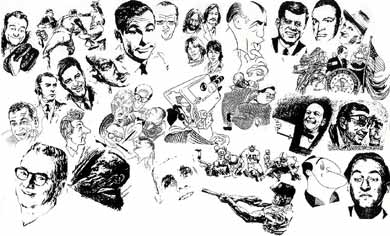
To search for a broadcast, please e nter a
Show Title, Personality, Airdate, Archive ID, Keyword or Phrase into the Search textboxes at the top of the page:
PRESERVING & ARCHIVING THE SOUND OF
LOST & UNOBTAINABLE ORIGINAL TV
(1946 - 1982)
"Preserving & disseminating important TV Audio
Air Checks, the video considered otherwise lost."
-Library of Congress
Vintage Television Audio Broadcasts
22,000 Titles - 20,000 Hours
Home | About us | Order Inquiry | TV Categories | Personality Index | Title Index
Archival Television Audio, Inc.
www.atvaudio.com
209 Sea Cliff Avenue
Sea Cliff, New York 11579
Attention: Phil Gries
|
Founder & Owner Phil Gries Director of Photography www.philgries.com |
"Any Inquiries"
Phone/Fax: (516) 656-5677
Email Us: gries@atvaudio.com
© 2002-2024 Collector's Choice Archival Television Audio, Inc.
All Rights Reserved.

Unique Visitors:
Visitor Counter
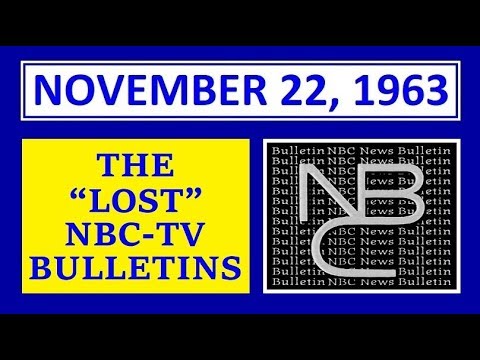
UNIQUE in the WORLD audio air check recordings by 20-year-old Phil Gries, archiving the first, second bulletins & initial NBC TV broadcast coverage of President John F. Kennedy's assassination. Not recorded by NBC or any other resource in the country.
- A&E TV SPECIAL - host Edwin Newman (11-22-1988) introduction - 25th Anniversary of JFK Assassination.
- NBC TV "Lost Don Pardo Bulletins" & Lost first 3:53 TV coverage (Phil Gries unique broadcast audio recording) unable to be video tape recorded or audio tape recorded by NBC.
- Phil Gries telephone interview with Don Pardo (5-14-1998).
- 10 minutes.
LIVE with PHIL GRIES
ARCHIVAL TELEVISION AUDIO - WEBINAR
Each Friday Evening from 7:30 - 8:30PM EST.
 RETRIEVABLE LOST MEMORIES
RETRIEVABLE LOST MEMORIESORDER
Vintage Television Audio Broadcasts
22,000 Titles
20,000 Hours
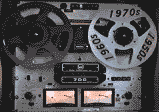
Testimonials
The Senior Moments Radio Broadcast show interviews Phil Gries about his Archival Television Audio archive and his restored documentary film, "Harlem School 1970"

Glen Cove Senior Center
January 23, 2018
 Phil Gries' recordings
Phil Gries' recordingsof vintage sounds
never grow old.

Hear Phil Gries on

Hear Phil Gries
and Joe Franklin
on Bloomberg Radio
(April 28, 2012)


Home
Contact Us
ORDER INQUIRY
Hear Phil Gries on
National Public Radio
Archive Profile

ALL THINGS CONSIDERED
"Raising Ali"
(May 22, 2015)
Hear Phil Gries
on Sports Talk:
August 25, 2019
June 26, 2016
August 9, 2015




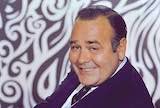
 Archive
ArchiveSearch Library
TV Categories
Personality Index
Title Index
ARSC Journal Article Publication: Lost TV Programs (1946-1972)

Hear Phil Gries presentations at ARSC (Association for Recorded Sound Collections) 2001, 2008, 2009, 2010, 2011, 2014.
Audio Samples

(Audio files may take 20 seconds or more to load)
1960's TV
Audio Player
103 Broadcast Samplers
AudioAndText™
Content
(Browser needs to
allow Flash content)
Content Collections
JFK Assassination
Coverage
NPR Walter Cronkite Essays
Civil Rights Movement (1956-1968)
Space Exploration (1956-1972)
Vietnam War
(1961-1975)
[854 Entries]
Company Information
About Us
Descriptions
Access
Fees
Archive
TIME-LINE
Accreditation
Master Materials
Research
Copyrights
Restricted Archive Titles
Catalogs
Related Materials
TV History
Lost Television
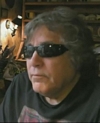
Jose Feliciano, at 70, listening to his FIRST TV variety show appearance (Al Hirt: FANFARE), telecast on July 17, 1965, when he was 19 years old.
TV Audio:
Rare & Valued
When TV Variety
Was King
This Anniversary Day
In Television History
ARSC/IASA London Conference: Why Collect?

News 12 Long Island
Live Television Profile:
Archival Television Audio, Inc
CAPTURED LIVE: CULTURES OF TELEVISION RECORDING AND STORAGE, 1945-1975

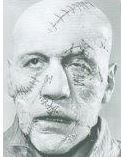
NBC MATINEE THEATER
FRANKENSTEIN
NBC TV - Feb. 5, 1957
8:23 min. excerpt
Phil Gries TV Audio Archive
Profile Segment
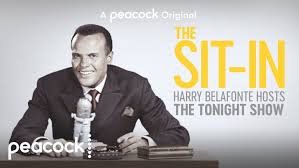
Harry Belafonte Hosts
The Tonight Show
5:21 min. excerpt
Password: Phil
(Case Sensitive)